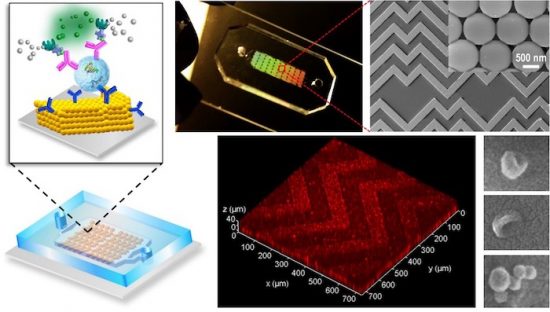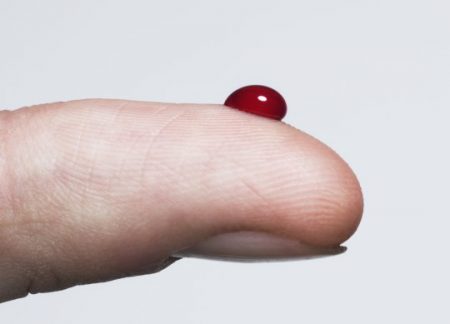March 2, 2019 – Researchers at the University of Kansas Cancer Center and KU Medical Center have invented a lab-on-a-chip that can detect cancer quickly. This liquid biopsy technology uses 3D nano-engineering to create a porous surface that lets the blood or plasma contact a built-in sensor on a microfluidic chip.
It represents a simple, low-cost cancer screening test that can be rendered anywhere. The researchers developed the technology to screen for ovarian cancer but now believe it is capable of detecting many other diseases.
The nano-engineering uses a herringbone pattern to push exosomes into contact with the many chip sensors that render a result quickly. The speed is key in creating much faster interventions to improve patient outcomes.
What are exosomes?
They are extracellular material released from cells. They are between 30 and 120 nanometers in size and get shed by cells where they serve as cell-to-cell communicators transferring nucleic acids, proteins, and lipids to other cells. Cancer cell-derived exosomes when released can serve as a biomarker for early detection. And because cancer cells shed lots of exosomes when compared to normal cells they leave a distinct molecular signature that can be detected in the blood.
How does the lab-on-a-chip work?
The micro-channels in the herringbone pattern make it possible for a maximum transfer of information contained within the blood or plasma drop including the presence of cancer-cell-produced exosomes.
Associate Professor Yong Zeng, in the Chemistry Department, University of Kansas, describes the unique structure that overcomes hydrodynamic resistance so that the exosomes make hard contact with the chip’s sensors. Described as microfluidic in design with the herringbone pattern forming a set of micro-channels etched or molded into the surface. Zeng states, “What we created here is a 3D nanopatterning method without the need for any fancy nanofabrication equipment – an undergraduate or even a high school student can do it in my lab…This is so simple and low-cost it has great potential to translate into clinical settings.”
Zeng sees the application as “not just limited to ovarian cancer or any one type of cancer. We’re working with people to look at neurodegenerative diseases, breast, and colorectal cancers, for example.”
The invention has even greater potential than Zeng describes. A lab-on-a-chip makes medical diagnostics infinitely portable and useful for screening other diseases. And it sure beats having to take a stool sample and mail it in to screen out colorectal cancer, or the more invasive cancer screening of having a colonoscopy every five years which is something I continue to endure with regularity.

















